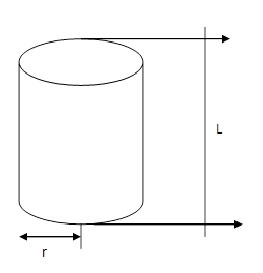In theory it is possible, but surface area and emissivity have to be taken into account. Then you will have different convective coefficients for vertical and horizontal surfaces. Looking at a motor body there are many fins which will increase the surface area; accuracy is paramount here as an incorrect area measure will throw out the results in a big way.
See below for a typical equation that might work to calculate energy loss from an object.
Natural convection heat transfer:
Q = h x A (Tsurface – Tatmosphere)
Also h is depending of the surface orientation en air velocity,
we assume that h for the horizontal and vertical surface is 6 W/m2 K.
Radiation of a surface to its surrounding atmosphere:
W = ε . A . σ (T4surface – T4atmosphere)
ε = the emissivity of the surface
A = the surface of the cylinder in m2
σ = Stefan Bolzman’s constant : 5,67 . 10-8 W/ m2 K4
Total surface of the cylinder is A = (2πr2) + (2πr . L)


